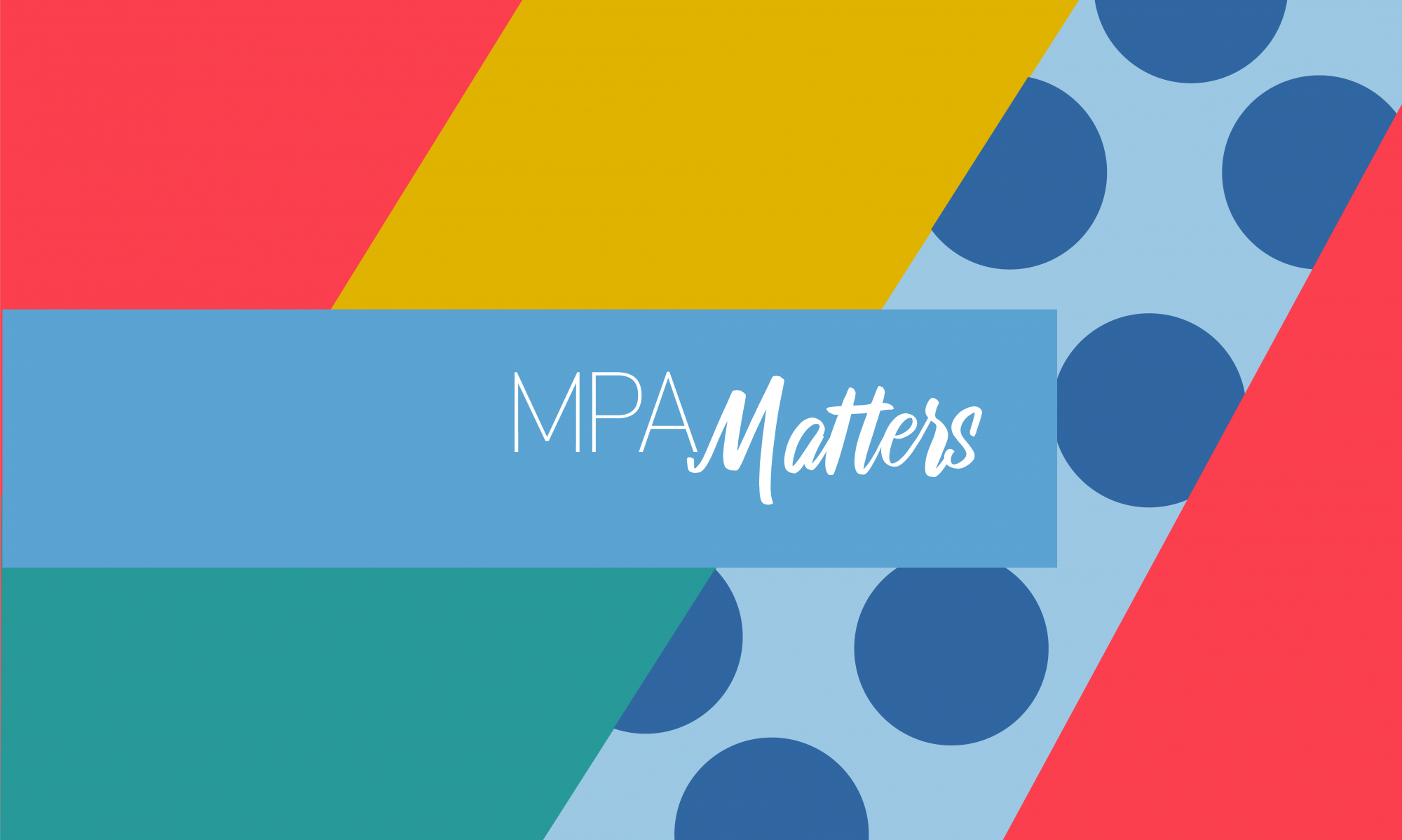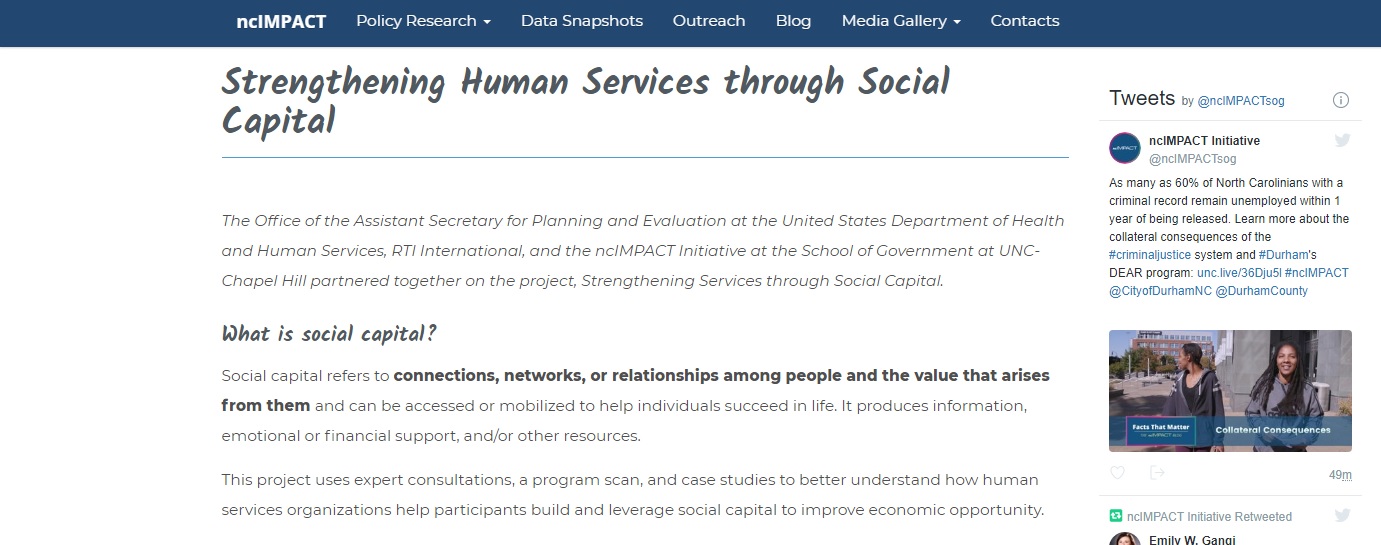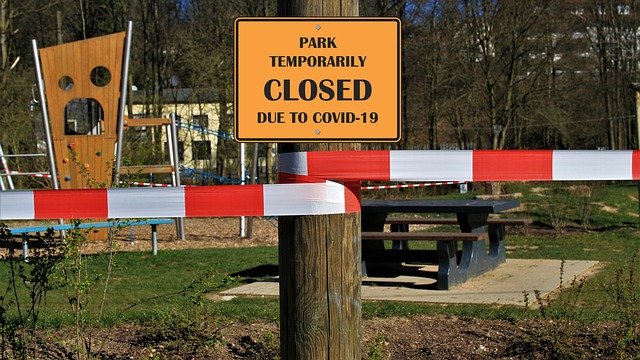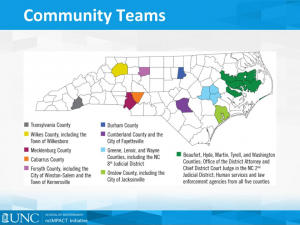
In theory, helping the teams create a 5-minute, multimedia presentation would have been fairly easy before COVID. They likely would have visited Chapel Hill during the summer for meetings, and I could have set them up for audio or video recording with professional equipment at the SOG. Worst case scenario, I may have had to make a road trip to the communities in order to co-create the presentations. However, COVID-19 has made client relationships much more complicated, especially in communities that may lack strong broadband access or public health infrastructure. Many of the individuals and organizations in the ORP are doing double duty as COVID-19 contact tracers, care providers, or policymakers. They are often extremely busy, even overwhelmed, with pandemic-related work, which makes finding time to meet difficult.
Additionally, travel restrictions and bans on in-person meetings have made all of our work on the presentations virtual. Instead of a day’s worth of recording, I have to schedule weeks of time in which I provide drafts to project managers and teams, they record audio, and I put the final products together. This has made working with clients much more difficult than it likely would have been without the influence of coronavirus. However, the teams have also expressed their gratitude for my help during this time, as they are overworked and already coping with drastic changes to in-person programs and services, including drug courts, syringe exchanges, and medical care and counseling. Although the pandemic might have made it more complicated and time-consuming, it has also taught me how to work with diverse clients virtually, and has thereby been a valuable professional experience both now and in the future.
Equity and Data-Driven Policy
Equity is a word that is floating around more in media coverage and professional discussions as Black Lives Matter protests continue this week. There are calls for dramatic policy changes to local, state, and federal governments around the issue of policing, but also other areas that can dramatically improve the lives of the historically oppressed – education, employment, social programs, and housing among them. In connection with my post last week, about making systemic change, I chose to write about a tool that can assist policymakers in creating more equitable policy, as well as an example of ncIMPACT’s current work in this arena.
One solution in the equity toolbox is to rely on data-driven policy in order to concentrate resources in the most needed areas, rather than relying on tradition or the judgment of those in power. This data does not just consist of surveys or graphs, but also listening to communities and respecting their expertise and self-determination in order to create policies and programs that fit them and their needs. Although this is often more time-intensive, policy made without the substantive participation of key stakeholders is often less effective, and may not have the intended outcomes for which it was created. ncIMPACT’s study designs often rely on mixed-methods and participatory research in order to discover needs and pilot solutions to equity-related problems, and I am fortunate to be working on several of them this summer.
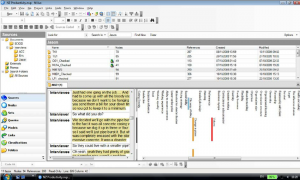
One such project is the survey that ncIMPACT conducted with local government officials to discover the impact of COVID-19 on their organizations and communities and see how the School of Government can best respond. I will be completing the qualitative analysis of several open-ended questions for the 200 or so respondents from 89 NC counties. This survey will give us the chance to measure, in semi-real time, the impacts of COVID on a state-wide scale, as well as in regions with diverse economies and risk factors for the pandemic. Being able to complete work that will likely directly impact the SOG’s programs and products during this time is a very fulfilling professional experience. Although it may not directly be related to racial equity or police reform, COVID is already having disparate impacts on communities of color, which is likely to continue even after a vaccine is available. Understanding how local governments are responding, and what support they need, is a unique role the SOG can play in mitigating the negative effects of the pandemic and making North Carolina a more equitable place.
Speaking Out and Making Change
Writing this blog has been difficult this week, as our country cries out in pain and anger and demands change of our institutions. The murders of George Floyd and Breonna Taylor by police in Minneapolis and Louisville have inspired global protests, including in all 50 US states. There are hundreds of thousands of people demanding justice in cities all over the country, including Raleigh, Durham, Chapel Hill, Charlotte, Greensboro, Fayetteville, Wilmington, and more in North Carolina alone. All of this is, of course, in the context of the systemic racism experienced by people of color – violence from police, but also disparities in every major health and wellbeing indicator, the trauma and chronic stress of interpersonal and institutional racism, and the reality that to many Americans, their lives matter less than their white counterparts. And I want to make it clear: Black Lives Matter, and it’s our responsibility as individuals and professionals to change the systems we work in to be anti-racist and anti-oppressive.
Working for a governmental organization is hard right now, as someone whose partner, best friend, and colleagues are Black. I recognize the complicity of all of our governmental institutions in racism, simply because of our nation’s history as one built on genocide and slavery. And I honestly didn’t know what to write about for MPA Matters that would not seem either tone deaf or overly political. I was worried not only that my words would not be sufficient, but also that they may not be appropriate for this platform. However, I argue that as we MPA students work in our PWEs this summer, that it is our duty to not only observe government’s functions and build our own skills, but also challenge the assumptions on which these organizations rest.
That challenge may not be the same for everyone; as an employee of the School of Government, my work must remain understandably policy neutral in order to engage elected officials and administrators from all corners of our state. And ncIMPACT’s work, including all of the projects on which I am working, are focused on making the lives of vulnerable populations, including Black North Carolinians, better, safer, and more prosperous. I can take some comfort in the fact that my efforts will effect some change, for individuals and communities if not the systems themselves. However, there is so much more to be done, personally, professionally, and institutionally, to address my and our roles in white supremacy and anti-black violence. My hope is that after the protests are over – when police have put down their tear gas and rubber bullets – that we all maintain the same level of urgency we feel now for change, unity, and the value of Black lives.
Project Management
Memorial Day weekend was a welcome break from a busy two weeks at my PWE. One of ncIMPACT’s staff members is ill, changing our team’s work flow. Suddenly, an important work product for the social capital project needed support, and it fell on my shoulders to complete a draft of a literature review in just a couple of days. I also picked up other responsibilities on both the social capital and EITC project which required me to attend an additional series of meetings, pulling my time and attention in multiple directions as we worked to complete the review. I felt not only the pressure of deadlines, but also pressure to step up as a new part of a small team and assert myself as an organizational representative.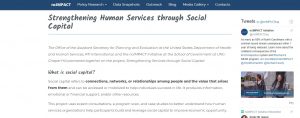
On Thursday of last week, I was talking to a friend who asked me if I was enjoying my internship. I immediately launched into an explanation of all the Zoom meetings I had, the deadlines I was up against, and the stress I was feeling because of it all. I waxed poetic about the additional stress of COVID-19, and how I hadn’t even had the chance to meet my coworkers because of it. After letting me vent, he said, “Okay, but are you enjoying it?” I paused for the first time in several days to actually think about that question. Sure, I was busy and maybe even a little overwhelmed by trying to adapt to my new role in the team so quickly. But did that mean that I wasn’t enjoying my time with ncIMPACT? Did it mean that maybe I was in the wrong place, at the wrong time?
Despite the stress of last week, reflecting on my experience allowed me to realize that this is exactly where I want to be right now, COVID aside. My supervisor and field instructor supported me both personally and professionally, including letting me flex my hours to work longer on some days so I could leave early Friday for a weekend away. Anita, ncIMPACT’s director, trusted me enough to let me attend an outward-facing meeting with clients as the only ncIMPACT representative because of my performance in earlier project meetings. And research partners valued my input during our interactions that they were responsive to a proposal I made to potentially augment a study design to collect key informant data, since COVID was affecting our ability to collect it from community members in a timely fashion.
Having more on my plate can be, rightfully, a source of worry. However, it really means that I am being allowed to dig in to the content and management of projects, meaningfully contribute to work, and grow as a social worker and public administrator. Being a part of a team that is as invested in my development as they are the outcomes of my work has been invigorating and encouraging. I can’t wait to see what else I’ll get to sink my teeth into this summer.
Perks of an MPA!
Still trying to decide what type of graduate degree best suits you? Well, here’s a list of FIVE perks of pursuing a Master of Public Administration degree.
1. Diversity of Students
MPA programs don’t attract a “specific” type of student. There is no clear track to getting to this degree. So that leads to a diversity of experiences and backgrounds that may be interested in this degree. Which also makes for interesting in-person or virtual classroom discussion.
2. Variety in Coursework
If you are someone like me, I love learning! The great thing about an MPA program is that the coursework is not just about how to run public organizations. We study a variety of subjects ranging from law to human capital management to budgeting to leadership! You are challenged in different ways every day.
3. Leadership Training
Leadership training was one of my favorite parts of the Carolina MPA program. Since MPA programs are expecting you to transition into the public sector and become leaders, coursework is typically focused on helping you hone that skill. In my experience, the coursework allowed me to reflect on the type of leader I am now and who I want to become in the future.
4. Unlimited Career Paths
This degree opens doors to multiple leadership and management roles, while doing good. You can have a career in various levels of government, nonprofit, philanthropy, health care, or even a consulting firm. One of the things I am most excited about for graduating with this degree is the endless possibilities for my professional career.
5. Giving Back
As a public administrator, you get to give back to the community. You get to work towards solving complex problems affecting your neighbors. In my opinion, this is the best perk of all!
I hope these perks help you decide if an MPA would be a good fit for you!
If you are contemplating between an MPA and a JD, be sure to check out my two-part series blog here: MPA vs JD Part 1 and MPA vs JD Part 2.
The Census and Data-Driven Decision Making!
With National Census Day (April 1) upon us, I wanted to talk about how important Census responses and data are for public administrators.

State and local governments, and even nonprofits, can use census data for descriptive analyses to describe the demographic diversity within a jurisdiction or assessments to understand the communities needs and target program and policy efforts effectively. Governments can use the data to help with planning related to public-policy decision making, including the day-to-day decision-making process.
Here are some ways that public administrators around you have used Census data:
- Reapportionment and Redistricting: Census data can be used to comply and enforce laws related to reapportionment and redistricting. For example, the race question on the Census becomes useful for local governments compliance with and enforcement of the Voting Rights Act. To learn more, check out this information.
- Community Planning and Development: Census data can be used at the city-wide level to prepare and update general plans like land use and housing elements and for infrastructure planning. To learn more, check out this information.
- Social Services: Census data can be used to assess the need of social service programs. For example, Head Start programs are mandated to serve families with the greatest need. Data from the Census Bureau, through the Census or the American Community Survey, are used to certify eligibility for federal and state funding of the Head Start program and to target areas where the program is needed. To learn more, check out this information.
- School Districts: Census data can help school districts develop demographic profiles of the students and community to better understand their educational needs. For example, this can help schools identify the need for bilingual instruction programs and other special services that may be warranted in the schools. To learn more, check out this information.
- New Service Justifications: Similarly to the above statements for schools, nonprofits and local governments can use Census data to create demographic profiles to justify new service provisions. To learn more, check out this information.
Census data can serve so many purposes; these were just a few! So please remember to complete your 2020 Census! This has a huge impact on what public administrators will understand about our communities for the next 10 years.
Complete your 2020 Census online at my2020census.gov, by phone at 844-330-2020, or by mail when the physical questionnaire arrives in mid-April.
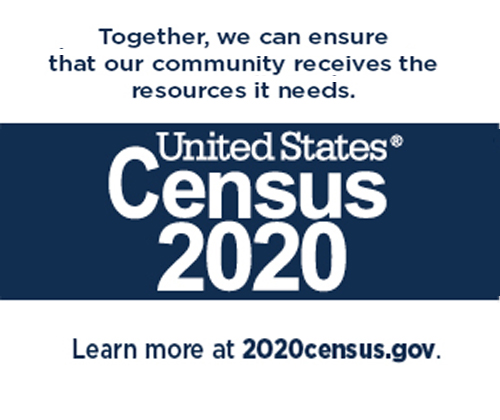
Adapting to Change
We’ve all been inundated with news about the coronavirus crisis that the world is coping with these days. Throughout the ordeal, public administrators remain on the front lines of the pandemic serving in many roles at all levels of government. Living through a time of crisis is unsettling, but I am encouraged by the committed public servants I interact with each week both in my PWE and in the MPA program. Students showed up in class this week despite working twelve (or more) hour days responding to the crisis. They work in local budget offices and health departments and emergency management. They serve in state and federal agencies, preparing their communities for the ongoing situation and the recovery that will follow.
Two weeks ago (has it really been only two weeks?) I drove down Main Street in Canton on the way to my PWE and noticed that downtown was thriving. Workers stood on ladders erecting signs for new businesses. Shoppers passed through the doors of boutiques. Tourists sat on the patios of the local restaurants. Since then, measures taken in response to COVID-19 have resulted in rapid and dramatic changes. When I drove through town this morning, the sidewalks were deserted. Except for a small number of residents venturing out for supplies or employees traveling to their shifts, the streets remain noticeably quieter.
Changes brought on by this pandemic have fundamentally altered the way we live, forcing everyone to adapt. In many ways, being a student in the MPA@UNC program has prepared me for working in the current environment. As other managers, employees, and students face a learning curve transitioning to remote work and distant learning, my PWE and school work continue uninterrupted. Like everyone else, I wake up wondering what changes the day’s news will bring. And, of course, the coronavirus has disrupted much of what I do every day. I am forced to balance new responsibilities while remaining focused on finishing my PWE, writing research papers, giving final presentations, and completing final exams. For now, though, I am grateful to be part of a program that has enabled me to adjust to uncertainty and confront new challenges every day.
Emergency Management and Public Administrators
warning: this post discusses emergencies and coronavirus
Public crises are scary, challenging, and unpredictable. As a student, avid traveler, and daughter of someone severely immunocompromised, the coronavirus (COVID-19) pandemic is a scary reality that I wasn’t expecting to experience ever in life. As a future public service leader currently working in local government, this experience serves as a unique lesson to learn how much public administrators are involved in emergency management. Emergency management is the coordination of resources and responsibilities to reduce the harmful effects of disasters, hazards, and crises. In times like these, the public relies on public administrators from varying fields and levels to provide accurate information and support as needed. So, in times of emergencies, what exactly do public administrators do?
Traditionally, emergency management encompasses four main categories: prevention, preparedness, response, and recovery. And public administrators are involved in every step along the way.
- Prevention: Prevention is the creation of deliberate steps and strategies to minimize damage. In thinking about any disaster, prevention is KEY! For example, let’s think about a beach town that is prone to hurricanes. Public administrators can establish building code that is intended to prevent damage from the winds of a hurricane. Requiring that all new buildings undergo this inspection will allow for less building damage in the community in the future and less money spent on repairs and cleanup.
- Preparedness: Preparedness is instituting measures designed to enhance awareness and response to crises. Preparedness is a necessary step after prevention. A good example of preparedness would be an in-school tornado or fire drill so that students are aware of the correct response during one of those crises. This can help minimize damage and harm to everyone involved.
- Response: Response is the coordination of resources to minimize the impact of crises. In the case of an emergency, responses are necessary to mitigate the crisis. Given the current pandemic, this is where I see public administration most at work. For example, the institution of travel bans, airport screenings, school closures, and online classes instead of in-person classes are all examples of public administration’s response to coronavirus. This is all an attempt to minimize the possible spread of the virus.
- Recovery: Recovery is the return of the community to normal or near-normal conditions. Even after the crisis is gone, there is still work to be done. Public administrators work towards “business as usual” by providing clean-up and support. An example of recovery is FEMA with home repairs and temporary housing assistance. This is how public administrators work to stabilize a community after a tragedy.
As we move through this time of concern and uncertainty with the coronavirus (COVID-19), we can rest assured that those who took the oath to serve the public are working hard to keep us as safe as possible now and will be prepared to support us as we begin to stabilize.
A special thank you to the public administrators, medical care providers, first responders, grocery store employees, and anyone else who continues working to make sure our communities have what they need as we go through this process together.
Canton Confronts COVID-19

This week, I saw a governor being interviewed about the coronavirus. He described his state’s response to the outbreak and emphasized the need for competent public service leadership during the crisis. “This is government,” he explained. “This is what it’s about. This is the mobilization, the skill, the expertise to manage a government.” Across the US, as Americans are adjusting to a new way of life, public servants are stepping up to tackle the challenges brought on by COVID-19. As we know, there are capable, well-trained experts in local, state, and federal government who have the skills necessary to effectively respond to nearly any situation. The American public can always depend upon public services to continue, even when life around them seems to be coming to a halt.
Other than a run on the grocery stores, life in the town of Canton continues (almost) as normal. Children are still in school. The baristas at the local coffee shop are still serving up lattes. And people are still coming to town hall to schedule services and pay bills. Today I met with the town manager to talk about Canton’s response to COVID-10. The town’s emergency services employees have been preparing for the arrival of COVID-19 for weeks by practicing extra precautionary measures. After a discussion about cleaning methods and hand washing, my conversation with the town manager naturally shifted to collaboration. Officials in neighboring Buncombe County declared a state of emergency yesterday, prompting surrounding municipalities to release recommendations and information about their own approaches to the outbreak. In Haywood County, local and county officials along with nonprofit organizations are coordinating responses, ensuring that they are adequately prepared and that public services go uninterrupted. Despite the stress of the last week, completing the PWE during this ordeal has been a great learning experience in crisis management. Seeing local government function effectively is reassuring at a time like this. Dedicated public servants who continue to show up everyday offer an encouraging reminder that life goes on even in the midst of chaos.
Remember to wash your hands! If you need directions or inspiration, check out Gloria Gaynor’s instructional video.
Women in Local Government Part Three: Alderwoman Kristina Smith on Having the Courage to Lead
Throughout February, my posts have featured women in local government, focusing on their roles and highlighting their contributions to the community. This week, we meet Kristina Smith, alderwoman for the town of Canton.
Many individuals point to a specific event that inspired them to enter public service. Hopeful MPA applicants may include descriptions of inspirational experiences in their personal statements. Politicians often tell stories describing encounters that motivated them to seek office. When I asked Alderwoman Kristina Smith what compelled her to enter public service, she pointed to a series of events. The city council meeting she attended as a young girl. The speech given by a president calling on individuals to get involved to make their communities a better place. An unexpected opportunity to lead in her new town.
The city council meeting Kristina attended as a young girl scout marked her first exposure to local government. She was struck by the diversity of leadership on the council. Following this experience, she realized serving in a leadership position does not require a specific type of person with a certain set of skills. Anyone can lead if they are willing to take on the challenge! Years later, Kristina moved to Canton with her family and became involved in her community. When the opportunity to run for local office arose, Kristina accepted

the challenge and was elected in 2017. In her new role as Alderwoman, Kristina enjoys engaging the community, problem solving, and always searching for the best outcome for Canton, regardless of the issue.
Given her experience, I asked Kristina if she had any advice to share with women interested in local government careers. Don’t doubt yourself or question your abilities, she said, “rather than asking yourself ‘can I lead?’ tell yourself, ‘I’m ready to lead.’” She emphasized the power of transferable skills and how beneficial they can be in taking on new opportunities. “There isn’t a single role for you,” she remarked, “think about all of your experiences and how they complement different roles.” As Kristina learned in that city council meeting, anyone can lead. The only limitations you have are the ones you put on yourself.
